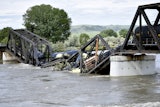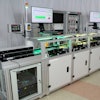
Ensuring the continuing effectiveness of leak detection systems (LDS) is of paramount importance for pipeline operators in order to meet tightening safety and environmental regulations and to minimize the potential risks of catastrophic events.
The updates of 49 CFR 195 require pipeline operators to evaluate the capability of their leak detection systems to protect the public, property and the environment and modify them as necessary to do so.
These systems often perform well when installed but degrade over time due to a wide range of factors including problems with instrumentation, software, maintenance and operations.
How do operators actually know whether their pipeline or pipeline network is sufficiently monitored during all operating conditions, whether all parts of the system are functioning properly and whether all the legal requirements and industry standards are met?
 KROHNE
KROHNE
Value of an Independent, Expert Audit
Given the critical importance of effective leak detection, operators frequently rely on industry experts, like KROHNE, to perform independent audits to test LDS performance periodically or when a major change in operations occurs.
For a relatively small cost, audits can ensure the leak detection system is performing as required and is optimized to prevent disastrous leaks as well as the product loss and environmental damage of small leaks and the detrimental impact of false alarms.
Audits by outside experts can also have an enormous return on investment when they guide operators to employ relatively simple, cost-effective solutions to avoid huge, ineffective capital expenditures on leak detection technology that is not well-suited to the operator’s particular application.
Comprehensive, Customizable Audit Program
Such audits should be part of a comprehensive program, because, as the API Pipeline Safety Management Systems Industry Team notes, “leak detection programs and systems rely on people, processes and technology. A deficiency in any one category can negatively impact the effectiveness of the other two.”
A comprehensive system does not mean that one size fits all. A program should be flexible enough to serve the needs of each operator in accordance with their company’s strategy, goals, and risk tolerances, and to address the particular operational issues and business needs at various points in time.
The American Petroleum Institute recommends a fit-for-purpose approach: “In instances where your company program is already sufficient, it may be just formally documenting what your company is currently doing to manage and reduce the risks of leaks. In other cases, you may need to strengthen your program by adding process, procedure, and/or technology to close gaps that are identified in your API RP 1175 Gap Analysis.”
Four Components to a Comprehensive LDS Audit
When designing a leak detection audit program, operators may wish to consider the framework KROHNE has developed in their PipePatrol Health Check program, a vendor-agnostic auditing and consultancy program based on over 35 years of experience in leak detection on over 420 pipeline projects.
We recommend that an audit be performed annually as well as any time there are major changes to pipeline operations or to the leak detection system itself, or when there is a large turnover in employees.
The audit process requires little to no effort by operators. The findings can be used to enhance quality and safety management and to support the needs of regulators or other third-party interests.
The deliverables are not only audit test results, but include a full report with explanations and recommendations.
A complete audit contains four components:
- Fundamentals
- Compliance
- Physical State
- Performance
Fundamentals
This stage provides a broad picture of the pipeline or pipeline network, the leak detection system, including a snapshot of the particular pipeline application, a checklist of the current Key Performance Indicators (KPIs) and an evaluation of the company’s readiness to leak response.
Snapshot
The operator’s application is documented including the fluid transported, the operating conditions (constant pumping, or sometimes shut down with valves closed), the topology the pipeline traverses (flat, hilly), the type of pipeline (above ground, underground, subsea), the pipeline itself (material, diameter, and thickness) and the consequences of leaks in various locations. An analysis is performed on whether these characteristics have been adequately considered in the selection of leak detection techniques.
Checklist
The design of the installed leak detection methods are analyzed against the operator’s metrics for desired performance, the industry best practices and Best Available Technology (BAT) with recommendations on how to achieve the desired KPIs.
Company Readiness
This step analyzes whether personnel have adequate training, procedures and capabilities to operate the system and react appropriately in case of a leak alarm representing a real leak.
 KROHNE
KROHNE
Compliance
The second stage focuses on whether the LDS complies with, or even exceeds, the applicable regulations and industry standards.
Computational Pipeline Monitoring
The CPM methods and procedures are analyzed to ensure compliance with API RP 1130.
Overall Leak Detection Program
The operator’s Leak Detection Program is systematically analyzed, using the API RP 1175 Gap Analysis Tool, to ensure that all processes have been performed and documented, including the selection of leak detection methods, the performance targets and metrics, testing, control center procedures for recognition and response, training and management of change.
Physical State
The next stage is to review the leak detection system currently in place, determining whether there is newer hardware available that can perform better, asking questions such as whether there have been operational changes that impact software requirements and whether newer security threats have emerged that must be addressed.
These questions are answered in two sets of data:
System Check
The current health and operational status of the leak detection system in place is documented through a survey of hardware operational status, software operational status and cyber security status.
Uptime Analysis
An historical review of the previous 12 months calculates the percentage of time the system has been running fully functional, degraded or nonfunctional. This analysis leads to recommendations for further analysis of the causes of failure or performance degradation.
Performance
The testing of installed leak detection systems and the organization’s response to leak events is obviously critically important to evaluating performance and to implementing and measuring improvements.
Testing is used to determine the quality and sensitivity of the leak detection system: how large does the size and flow rate of the leak need to be to trigger an alarm and how well can the system pinpoint the leak’s location?
Tests fall into two categories:
Simulated leak test
In simulated leak testing, artificial leakages of different sizes are generated and the organization’s response is observed. Methods of simulating leaks include playback of historical leak test data or overriding SCADA or changing the values of the flow meters and pressure meters to alter the signals that the LDS receives.
Physical leak test
The installed leak detection system’s performance and the organization’s response can also be measured by a physical leak test involving actual withdrawal of varying amounts of fluid from the pipeline.
This method is often recommended for the initial leak tests as the complex response of a pipeline in case of a leak cannot be fully simulated.
Invaluable Visibility and Insight
A complete pipeline leak detection audit gives visibility to the health and effectiveness of the leak detection system and insight into the organization’s readiness to fully respond to alarms.
Being able to prevent everything from small leaks to catastrophic events allows pipeline operators to avoid polluting the environment, paying big fines, losing money in lost product and tarnishing their brand.
 KROHNE
KROHNE























